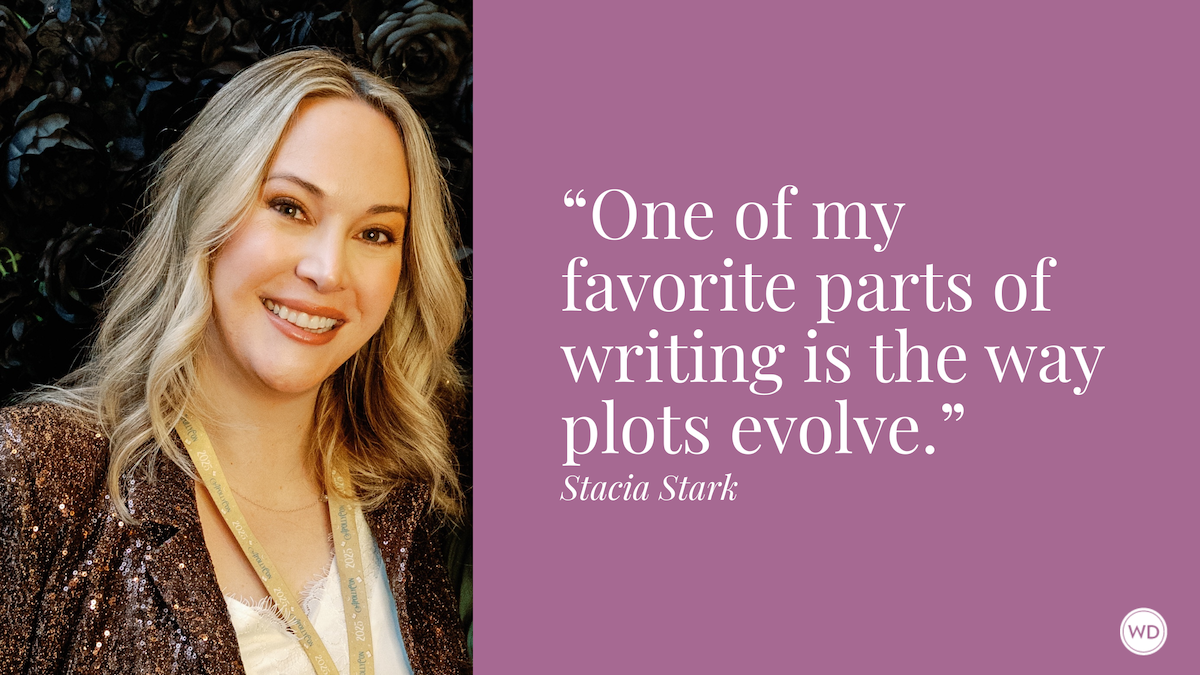Take Two: Writing and Formatting Sluglines
Orienting the reader of your screenplay requires the use of sluglines. Jeanne Veillette Bowerman shares tips on properly formatting a slugline to make your script read like a pro.
Screenwriting executives look for a lot of “white on the page.” It’s just what you think it means. Less words, more white. It’s not as strange as you think. Every page of script represents one minute of film. We must write to fit that time frame, meaning no flowery prose and rambling scene descriptions.
The greatest compliment a writer can get is when an executive calls their script “a fast read.” Making your script read quickly requires appropriate use of sluglines.
WHAT IS A SLUGLINE?
Simply put, a slugline (or slug line) is a scene heading to help orient the reader quickly as to where that action takes place. Inside or outside, day or night, or what room in what building. Sluglines are succinct and simple.
Locations also aid the producer in identifying the script’s budget. Every location creates a new cost. For example, each scene being shot in the daylight or darkness, during sunrise or sunset, represents not only cost, but also time constraints during production. Whenever writers identify a specific time of day, the director has limitations on when he can shoot those scenes. As the number of locations increases, so does the film’s price tag. Increased costs occur every time a camera and crew must move to a new location. Some locations are inexpensive, but others are simply impossible, unless the production company can recreate it on a set or use a greenscreen.
Films are never shot in order of scene, but instead, shot by locations, using sluglines to guide them. Screenwriting software remembers each slugline and allows you to insert it wherever needed, which also allows a director to keep track of locations to create a shooting schedule. When you’re writing the first draft, don’t put limitations on yourself, but when you rewrite, examine the number of locations and slice and dice, where possible.
Your script represents a blueprint for the director and production crew.
FORMATTING A SLUGLINE
Formatting isn’t sexy, but it’s a requirement of screenwriting. Screenwriting software takes a lot of the heavy lifting away, but a writer must know the industry standards, regardless.
Sluglines are always written in CAPS, with an empty line above and below.
Formatting sluglines in bold has become popular, but that’s only a personal preference and must be consistent throughout.
Place a single dash with a space before and after to separate each aspect of a slugline.
ORIENT THE READER
David Trottier, aka Dr. Format, encourages writers to ask “Where am I?” I also think of it as “Where is the camera?”
First, define if the scene is shot inside or outside, using INT. for “interior” and EXT. for “exterior.” Use a period after the abbreviation. Most writers choose to always identify DAY or NIGHT, but some suggest only quantifying the time of day if it’s important to the scene.
Sometimes a scene has an added detail, such as weather factors. Again, only add these details if they matter. Fog or rain add expense to production, so be certain they’re essential to your story. Insert them in brackets into the slugline because weather would be important for the production crew to know.
The sluglines above are called master scene headings. What happens if your character goes into Alice’s house and moves around from room to room? We use secondary scene headings.
Use sluglines creatively to guide the perspective of camera angles. Without camera angles in the example above, you can still “see” the moving of the camera simply by the use of secondary scene headings. You can use unlimited secondary scene headings as long as the master scene heading is relevant to each secondary location.
While the slugline identifies the location, it does not include a detailed description of the scene. Furthermore, if you write the location in the slugline, do not repeat it in the description that follows.
Should be written as follows:
Beyond establishing a location, the slugline may also be used to guide the eye of the reader and production team to focus on a certain object or character in the shot.
FORMATTING PASSAGE OF TIME
What if, from the previous example, Alice sobs on her bed for hours? Sluglines help demonstrate a passage of time. You could format the time passage as follows:
Or the following, using a secondary heading, is also correct:
You do not need a new master scene heading for a change in time within the same location. You would only need one if there’s a change in camera location.
Some screenplays show a passage of time with a SERIES OF SHOTS or a MONTAGE.
Proper montage formatting varies. The basic rule is to use a slugline, defining the beginning of the MONTAGE, then give a brief description of its purpose. Follow with a short list of scenes, finally indicating the end of MONTAGE.
Here are a few options of how to format them properly.
Another option for the same MONTAGE would be to show scene headings, as so:
Sometimes the writer needs to tell a quick story within the story, using a SERIES OF SHOTS. This differs from a MONTAGE in that a MONTAGE focuses on one subject, like in the example above. However, the terms are used interchangeably.
Our options aren’t done yet. The above SERIES OF SHOTS could also be formatted using double dashes instead of identified by letters.
Formatting confuses beginning screenwriters, but once you learn the basics, you catch on quickly. Two resources I always have within reach are written by David Trottier: The Screenwriter’s Bible and Dr. Format Tells All. Sluglines guide the reader to the right location. Trottier’s expertise guides you to format like a pro. Dave also has a formatting column on Script's site here.
For more information on screenwriting, browse our sister site, ScriptMag.com.
Learn proper screenplay formatting with David Trottier's SU course, Proper Formatting Technique: Script Format Made Easy
About Jeanne Veillette Bowerman
Jeanne Veillette Bowerman is an Executive at Pipeline Media Group and former Editor-in-Chief of Script magazine and a former Senior Editor at Writer's Digest, where she wrote the regular screenwriting column, Take Two, for Writer's Digest print magazine. Stephanie Palmer listed Jeanne as one of the "Top 10 Most Influential Screenwriting Bloggers." She is also Co-Founder of Writers Strong as well as Co-Founder and moderator of the weekly Twitter screenwriters’ chat, #Scriptchat, and wrote a Tracking Board Top 25 Launch Pad Competition selected script, the narrative adaptation of the Pulitzer Prize-winning book, Slavery by Another Name, with its author, Douglas A. Blackmon, former senior national correspondent of The Wall Street Journal. The 10-hour limited series version of the same project was selected as PAGE Awards TV Drama Pilot Finalist as well as a Sundance Episodic Lab semi-finalist. Jeanne consults with writers on how to build and strengthen their online and offline networks as well as face their fears in order to succeed in writing and in personal peace - a screenwriter's therapist. More information can be found on her website. Follow @jeannevb on Twitter and @jeannevb_ on Instagram.









